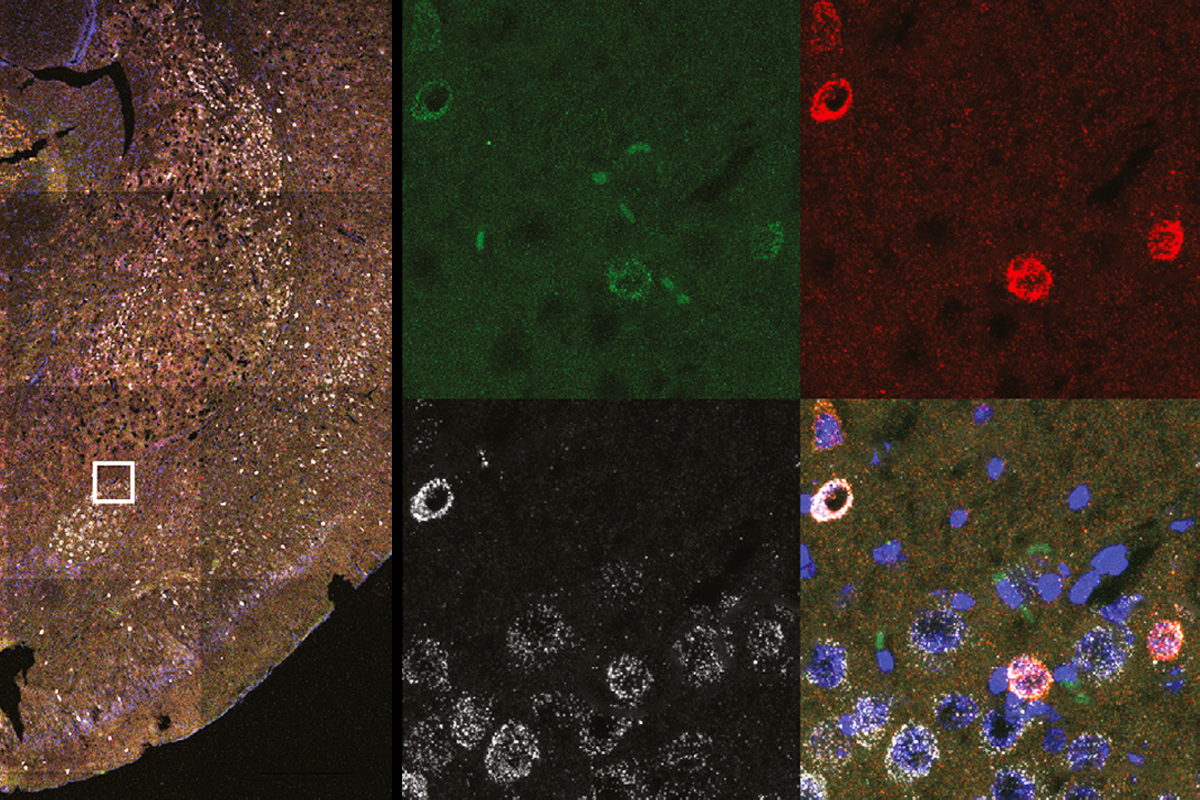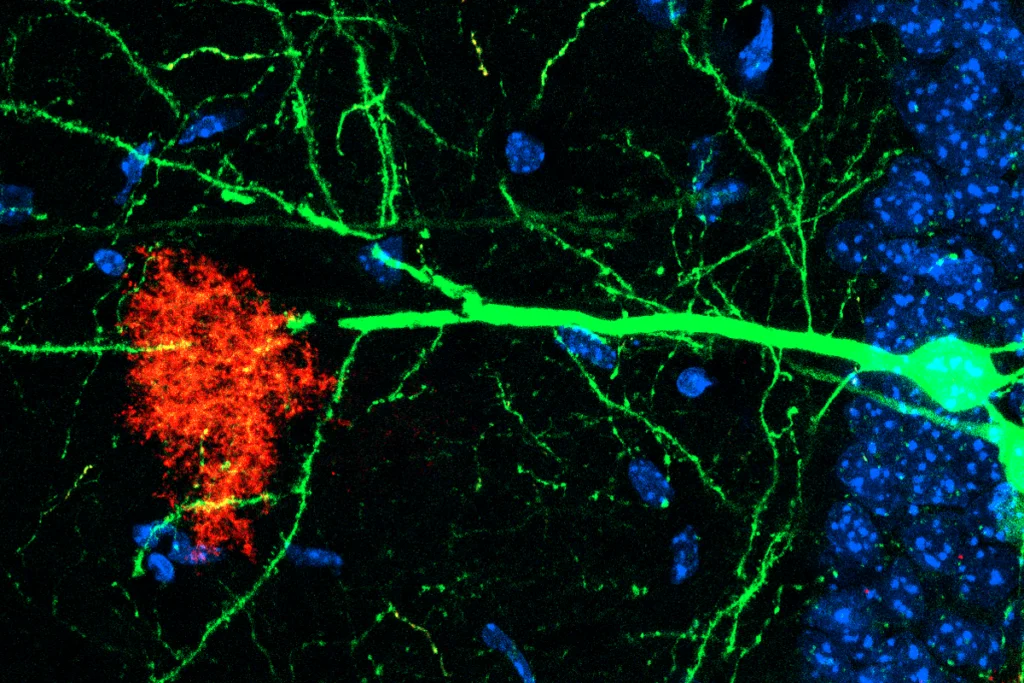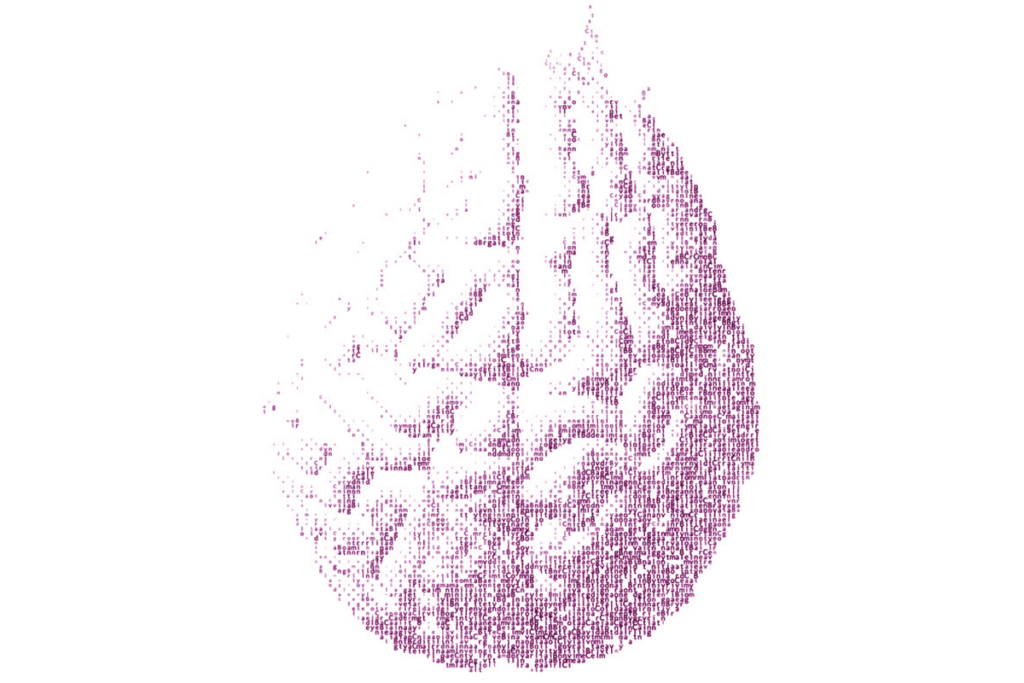Fear memories serve a purpose: A mouse in the wild learns to fear the sound of footsteps, which helps it avoid predators. But in certain situations, those fear memories can also tinge neutral memories with fear, resulting in maladaptive behavior. A mouse or person, for instance, may learn to fear stimuli that should presumably be safe.
This shift can occur when an existing fear memory broadens—either by recruiting inappropriate neurons into the cell ensemble that contains it or by linking up to a previously neutral memory, according to two new studies in mice, one published today and another last week.
Memories are embodied in the brain through sparse ensembles of neurons, called engrams, that activate when an animal forms a new memory or recalls it later. These ensembles were thought to be “stable and permanent,” says Denise Cai, associate professor of neuroscience at the Icahn School of Medicine at Mount Sinai, who led one of the studies.
But the new findings reveal how, during times of fear and stress, memories can become malleable, either as they are brought back online or as the neurons that encode them expand.
There is “this really powerful ability of stress to look back and change memories for neutral experiences that have come before by pulling them into the same neural representation or by exciting them more during offline periods,” says Elizabeth Goldfarb, assistant professor of psychiatry at the Yale School of Medicine, who was not involved in the studies.
That challenges the previous dogma, Cai says. “We’ve learned that these memory ensembles are actually quite dynamic.”
M
ice that repeatedly experience a mild foot shock paired with a particular tone learn to freeze in fear when they hear that tone later, previous studies show. And if the animals are restrained for 30 minutes before this task—an experience that causes them stress—they also learn to freeze in response to a different tone, a sign that the fear memory has been generalized to other stimuli.This stress response—and corresponding increase in cortisol—in particular can strengthen memories. And when mice experience extreme stress, certain neurons change the neurotransmitters they use to communicate in a way that contributes to generalized fear, according to a study published in March. Mice that are restrained before the fear-conditioning task have higher levels of the stress hormone corticosterone than those that are not, the study published today confirms. And mice that are injected systemically with cortisol before the task end up with an expansion of the lateral amygdala engram ensemble—visualized using c-FOS and fluorescent markers—that encodes their fear memory.
But exactly how the memory engrams grew larger was not clear, says Sheena Josselyn, senior scientist at the Hospital for Sick Children, who led the work.
Fear engrams integrate the neurons that are most active while a memory is being created, previous research has shown. That precision is thanks in part to parvalbumin-positive inhibitory interneurons that, like bouncers screening people at a club, exclude weakly active neurons and constrain the size of the engram.
An increase in cortisol, however, disrupts that screening process, Josselyn and her colleagues found. Cortisol boosts levels of endocannabinoids that act on the inhibitory neurons’ endocannabinoid receptors and dampens their activity, fiber photometry and electrophysiology experiments revealed. With the release of this brake on neuronal exclusion, more ensemble neurons get activated—and therefore integrated into the memory. The team published the findings today in Cell.
Mice that experience this engram expansion are unable to distinguish safe from threatening stimuli, Goldfarb says. “It’s just a really intuitive way to understand why these memories seem to stretch to inappropriate situations.”
A
versive experiences can also modify memory ensembles created days earlier, the second study showed using calcium imaging. When mice learn to associate a particular environment, such as a specific box, with foot shocks, they freeze when they are reintroduced to it. And later, during periods of rest, the relevant neuronal ensemble reactivates to help solidify the memory after learning.But when a mouse instead forms a neutral memory of a different box, a later aversive experience can co-activate the hippocampal ensembles underlying the innocuous and threat memories, linking the two memories together, Cai and her colleagues reported last week in Nature. When that happens, the mice begin to freeze in the previously “safe” box: The co-activation transfers the fear response to that previous context, the team found.
“That is remarkable,” says Marloes Henckens, associate professor of medical neuroscience at Radboud University, who was not involved in the work. “[The memories are] linked so that the mice also fear this neutral context.”
This memory linking happened when the mice were still but not asleep; awake mice showed more co-reactivation of the two memories than did sleeping mice, Cai and her colleagues discovered. That was surprising, because this offline reactivation is typically thought to occur during sleep, Cai says. The quiet rest may let animals reflect on previous experiences after an aversive event, which might result in linking the memories together, she adds.
Both Cai and Josselyn are interested in understanding whether these mechanisms for the broadening memories hold up across other brain areas and forms of memory. A similar dampening of inhibitory neurons and expanding of engrams underlies the lack of specific episodic memories in juvenile mice, a previous study found. That might represent a general tool of how memories get modified, Josselyn says.
And Cai and her colleagues found that positive memories, too, can be linked across time. Mice that were injected with cocaine, a strongly rewarding stimulus, retroactively linked that experience to a neutral memory, the team reported. They are now working to identify if that process also occurs through a co-reactivation mechanism, Cai says.
It is possible that memories are regularly updated in this fashion, she adds. Each unique and new experience might “change the mechanisms of how that memory is encoded or stored or retrieved.”





